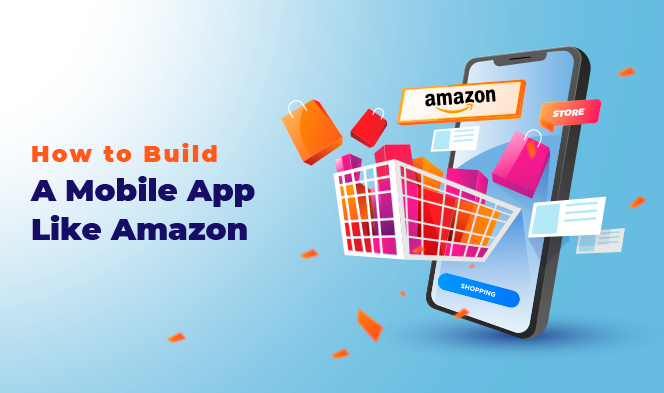Introduction:
In the digital era, e-commerce has become an integral part of our daily lives, transforming the way we shop and conduct business. Amazon, as a global giant, has set the benchmark for e-commerce platforms. If you’re considering create app like Amazon, you’re venturing into a competitive yet rewarding landscape. In this article, we’ll delve into the key steps and considerations to help you navigate the process of building a successful e-commerce app.
-
Market Research:
Before diving into development, thorough market research is crucial. Understand your target audience, their preferences, and the unique selling points that will set your app apart. Analyze competitors, identifying their strengths and weaknesses to gain insights into the market trends and demands.
-
Define Your Unique Value Proposition:
Amazon’s success lies in its customer-centric approach, extensive product range, and efficient logistics. To compete, your app must offer a unique value proposition. This could include specialized product categories, innovative features, or a personalized shopping experience. Clearly articulate what makes your app stand out from the crowd.
-
Choose the Right Business Model:
Selecting the appropriate business model is fundamental to your app’s success. Decide whether you’ll operate as a marketplace, selling products from various vendors, or adopt a direct-to-consumer model. Consider revenue streams such as transaction fees, subscription services, or advertising to ensure a sustainable business model.
-
Design an Intuitive User Interface:
User experience is paramount in the success of any e-commerce app. Design a clean, intuitive interface that facilitates easy navigation and a seamless shopping experience. Prioritize mobile responsiveness, as a significant portion of online shopping occurs on smartphones. Ensure the checkout process is simple and secure to minimize cart abandonment.
-
Implement Robust Security Measures:
E-commerce apps handle sensitive customer information, making security a top priority. Incorporate robust encryption protocols, secure payment gateways, and regularly update security measures to protect user data. Building trust with your customers is essential for long-term success.
-
Develop a Scalable Backend:
A scalable backend infrastructure is crucial as your app grows. Choose a reliable hosting solution, implement efficient database management, and utilize cloud services to ensure your app can handle increased traffic and transactions without compromising performance.
-
Seamless Integration of Payment Gateways:
Enable a variety of payment options to accommodate diverse customer preferences. Integrate popular payment gateways, such as PayPal, Stripe, and others, to facilitate smooth transactions. Ensure the payment process is secure and complies with industry standards.
-
Optimize for Search Engines:
To attract organic traffic, optimize your app for search engines. Implement SEO best practices, including keyword optimization, clean URLs, and a sitemap. Regularly update product descriptions and metadata to improve visibility on search engine results pages.
-
Prioritize Mobile App Development:
Given the widespread use of smartphones, having a dedicated mobile app is essential. Whether developing for iOS, Android, or both, ensure the app is user-friendly, responsive, and offers a consistent experience across devices. Regularly update the app to introduce new features and fix any bugs.
-
Implement Personalization Features:
Enhance user engagement by incorporating personalization features. Recommend products based on user preferences and purchase history, offer personalized promotions, and create a user-friendly account dashboard. Personalization enhances the overall shopping experience, fostering customer loyalty.
-
Efficient Logistics and Order Fulfillment:
Streamline logistics and order fulfillment processes to ensure timely and accurate deliveries. Establish partnerships with reliable shipping carriers, implement real-time tracking features, and communicate transparently with customers regarding order status. Efficient logistics contribute to a positive customer experience.
-
Invest in Customer Support:
Prompt and efficient customer support is a cornerstone of successful e-commerce platforms. Implement multiple channels for customer inquiries, including live chat, email, and phone support. Address customer concerns promptly to build trust and loyalty.
-
Marketing and Promotion Strategies:
Develop a comprehensive marketing strategy to promote your app. Utilize digital marketing channels such as social media, email campaigns, and influencer collaborations. Offer promotions, discounts, and loyalty programs to attract and retain customers. Leverage data analytics to refine your marketing strategies over time.
-
Analytics and Monitoring:
Integrate analytics tools to track user behavior, monitor app performance, and gather insights into customer preferences. Regularly analyze data to identify areas for improvement, track the effectiveness of marketing campaigns, and make informed business decisions.
-
Compliance with Regulations:
Ensure your app complies with relevant regulations, including data protection laws, consumer rights, and industry standards. Implement measures to protect user privacy, secure sensitive information, and adhere to legal requirements in the regions where you operate.
Conclusion:
Creating an e-commerce app like Amazon requires careful planning, attention to detail, and a commitment to providing an exceptional user experience. By conducting thorough market research, defining a unique value proposition, and implementing robust security measures, you can build a platform that attracts and retains customers. Keep abreast of industry trends, regularly update your app, and prioritize customer satisfaction to stay competitive in the dynamic world of e-commerce.


